
Eco-Friendly Home Decor: Upcycling And Repurposing Ideas
By Evert Heijns | April 19, 2023
Are you looking for an eco-friendly way to spruce up your home? Upcycling and repurposing is a great solution. Not only does it save you money, but it also helps reduce the amount of waste going into landfills.
With just a few simple items, you can create beautiful pieces of decor that are sure to make your friends and family marvel at how creative you’ve become!
In this article, we’ll discuss some of the best ways to use upcycled materials in home decorating. We’ll explore what types of objects work well with repurposing ideas, as well as provide step-by-step instructions so that even novice DIYers can get started on their own projects.

You will learn how to take ordinary household items and turn them into unique works of art worthy of any room in your house – no matter its size or style.
Finally, we’ll give tips on how to source affordable supplies from thrift stores and flea markets, so that you don’t have to break the bank when bringing new life into old things.
So whether you’re looking for something special for yourself or an unexpected gift for someone else, there’s bound to be an upcycling project perfect for adding a touch of personality anywhere in your home. Ready? Let’s dive in!
- Definition
- Benefits Of Upcycling And Repurposing
- Creative Decor Ideas
- How To Source Recycled Materials
- Alternatives To Plastic And Synthetics
- Sustainable Furnishing Solutions
- Environmentally-Friendly Paints, Stains, And Finishes
- Secondhand Treasures
- DIY Projects
- Best Practices For Waste Reduction
- Cost Savings Of Eco-Friendly Home Decor
- Resources For Inspiration
- Frequently Asked Questions
- What Is The Best Way To Find Upcycled/Repurposed Materials?
- Are There Any Natural Fabrics Or Textiles That Are More Environmentally Friendly Than Others?
- What Are The Most Cost-Effective Eco-Friendly Options For Home Decor?
- Are There Any Alternatives To Plastic And Synthetics For Home Decor?
- What Are The Best Practices For Reducing Waste When Shopping For Home Decor?
- Conclusion
Definition
Upcycling and repurposing are two methods of eco-friendly home decor that have become increasingly popular. Upcycling is the process of taking an item or material, such as wood, metal, paper, plastic or glass, and using it to make something new and different from its original purpose.
Repurposing involves transforming an old product into a new one without changing its core characteristics. Both these processes reduce waste by avoiding buying more materials for decoration purposes.
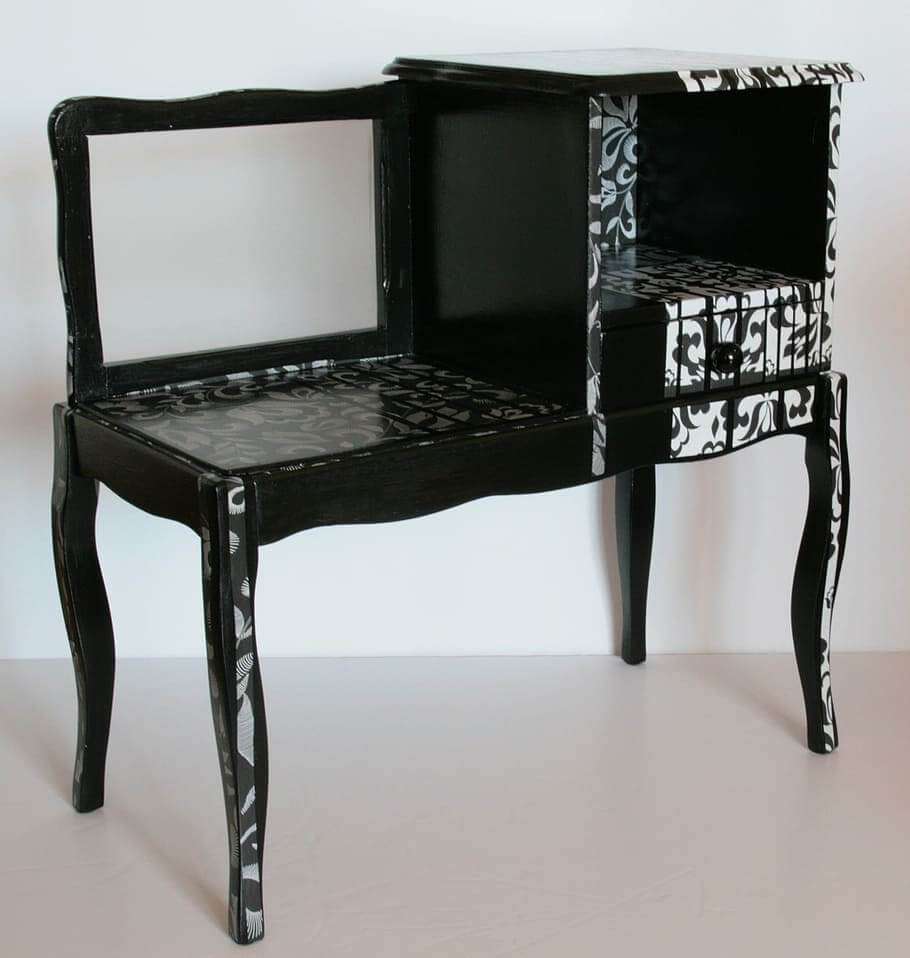
These practices also offer unique opportunities to express creativity when designing a space with custom made items. The upcycled and repurposed pieces can be used in combination with store bought products for a stylish yet sustainable look.
Moreover, they allow people to save money on decorations by creating them out of what would normally be considered scrap or junk. T
he possibilities are endless when it comes to upcycling and repurposing items around the house; whether it’s reusing jars as vases or turning cardboard boxes into shelving units – you can create your own green oasis at home!
Now let’s explore some of the benefits of utilizing this approach towards eco-friendly home decor…
Benefits Of Upcycling And Repurposing
Picture a world where every item, no matter its value or purpose, has an opportunity to be reused and repurposed as something greater. This is the power of upcycling.
With creativity, skillful techniques, and some elbow grease, old items can be transformed into beautiful home decor pieces that are both eco-friendly and stylish.
Upcycling offers many benefits beyond simply adding charm to your decor. By creating new things from pre-existing materials you’re reducing waste while saving money on buying brand-new products.

You’re also helping to conserve natural resources like timber and oil since it takes less energy to reuse than make something new. Furthermore, upcycled goods often have unique characteristics that add personality and character to a space.
The possibilities for making amazing art with upcycling are endless! All it takes is imagination and dedication – two qualities any DIYer possesses in spades.
Whether it’s transforming jars into chic candle holders or turning vintage bottles into flower vases; upcycling allows you to contribute towards a more conscious lifestyle without compromising style or luxury .
Ready to get creative? Let’s dive into some inspiring ideas for crafting eco-friendly home decor!
Creative Decor Ideas
Upcycling and repurposing are great ways to create beautiful, eco-friendly home decor. Here are some creative decor ideas you can use:
- Reuse old glass jars as containers for storing small items like paper clips or buttons.
- Create a rustic look by reusing wood from pallets or crates to make shelves, wall hangings, or planters.
- Get crafty with scrap fabric and turn it into pillow covers and quilts.
- Transform outdated furniture pieces using paint, decoupage, and stencils. This is a great way to give an old dresser new life!
- Repurpose vintage finds such as teacups, plates, bottles, etc., and turn them into interesting vignettes for your home.
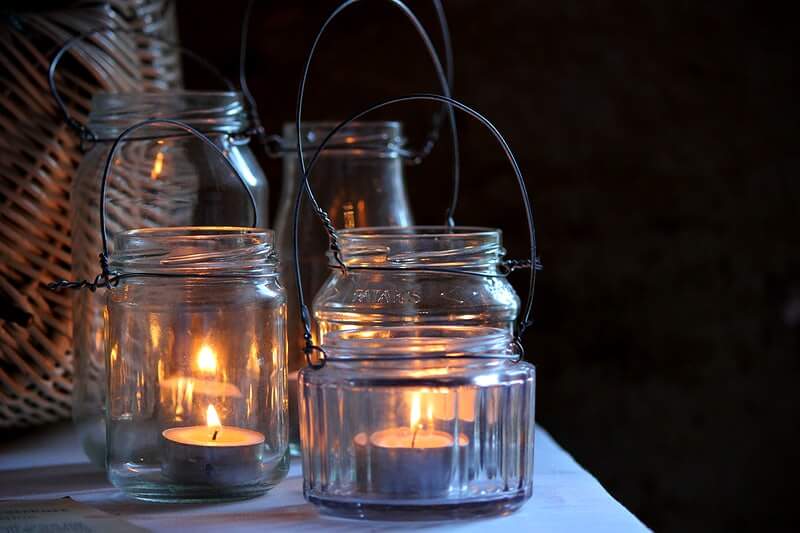
Not only do upcycled decor pieces add texture to any room in the house but also they have the potential of becoming family heirlooms that will be treasured for generations to come.
When shopping for materials to use when upcycling and repurposing items around the house, always choose sustainable products that won’t harm the environment. With these tips in mind, let’s move on to exploring which materials are best suited for creating eco-friendly home decor pieces.
How To Source Recycled Materials
Finding recycled materials to use for your eco-friendly home decor projects is easier than you might think.
Start with what’s already in your home; items that may no longer be of use to you can often be repurposed into something new and beautiful.
Items like old mason jars, empty food containers, or even pieces from a broken appliance can all make great additions to any upcycling project.
You should also check out thrift stores and garage sales for hidden gems. Old furniture, dishes, decorations – anything that could have potential as an upcycled item should be considered.
If you’re lucky enough to live in a city that has regular flea markets or antique fairs, there are sure to be plenty of treasures waiting to be discovered!
Don’t forget about online resources either: websites such as Etsy and Ebay are filled with unique finds just waiting for someone to give them a second life through upcycling.
With a little bit of creativity and research, the possibilities are endless! Now let’s turn our attention towards alternatives to plastic and synthetics when creating environmentally friendly home decor.
Alternatives To Plastic And Synthetics
Plastic and synthetic materials are pervasive in home decor, but they can have a negative impact on the environment.
Fortunately, there are many alternatives that are both eco-friendly and aesthetically pleasing. Here’s how to choose sustainable options for your home decor:
| Eco-Friendly Materials | Aesthetics | Durability |
|---|---|---|
| Bamboo/Cork Floors & Furniture | Rich hues & grain patterns of natural wood | Highly durable; resists scratches & dents caused by heavy furniture or foot traffic |
| Organic Cotton Textiles | Soft fabrics with traditional prints, stripes, and more | |
| Hemp Rugs & Wall Hangings | Unique woven textures and colors |
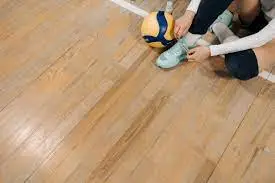
When shopping for eco-friendly products, look for items made from renewable resources like bamboo or cork floors and furniture, organic cotton textiles, or hemp rugs and wall hangings.
Not only are these materials stylish and easy to maintain, they also help reduce our carbon footprint. Plus, their unique textures offer an eye-catching contrast when paired with other elements in your home.
Lastly, these materials come at competitive prices making them accessible to everyone who wants to go green without breaking the bank!
Now that you know some great alternatives to plastic and synthetics for your home decor, let’s explore sustainable furnishing solutions next.
With a few simple swaps here and there you’ll be able to create an environmentally friendly space that is stylish too!
Sustainable Furnishing Solutions
Sustainable furnishing solutions are the perfect way to spruce up any home without compromising on eco-friendly principles. There are plenty of ways to get creative with sustainable furnishings, and you don’t have to sacrifice style or quality.
Here are some ideas for how you can make your home more aesthetically pleasing while still being green:
- Upcycle old furniture – Take a piece of used furniture and repurpose it into something new and improved! Whether you’re restoring an antique armchair or giving an outdated dresser a facelift, upcycling is a great way to add character and charm to your living space while also reducing waste.
- Shop at thrift stores – Thrifting has become increasingly popular in recent years as people look for unique pieces that won’t break the bank – or the environment!
Shopping secondhand is not only cost-effective but also helps reduce landfill waste since items purchased from thrift stores tend to be reused rather than thrown away. Plus, there’s always the chance you might find a one-of-a-kind treasure! - Look for locally made products – Supporting local businesses means helping keep jobs in your community, as well as limiting transportation costs associated with shipping goods from afar.
Consider looking around for locally crafted furniture options such as reclaimed wood tables or handmade chairs that will add personality to your decor while keeping sustainability top of mind. - Reuse materials wherever possible – If you’re feeling crafty, why not try making something yourself? Recycled materials like cardboard boxes, fabric scraps, wine corks and even tin cans can all be transformed into beautiful home decor items if you put your own spin on them!
From DIY shelving units to custom wall art, there’s no limit when it comes to reusing found objects in creative ways.
With these sustainable furnishing solutions, you’ll be able to give your home a fresh look without sacrificing environmental responsibility.
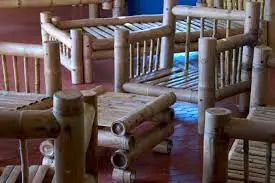
Environmentally-friendly paints, stains, and finishes are another great option for adding color and texture without having a negative impact on the planet – which we’ll discuss next!
Environmentally-Friendly Paints, Stains, And Finishes
Making the switch to eco-friendly home decor doesn’t have to mean sacrificing style. There are plenty of options for making your space look stunning while still being mindful of the environment. One way to do this is by using paints, stains, and finishes that are both stylish and environmentally friendly.
When it comes to painting walls or furniture, there are several low VOC (Volatile Organic Compound) paint brands available on the market today.
These paints contain fewer chemicals than traditional paints, reducing their environmental impact. In addition, they don’t release harmful fumes into the air like standard paints do, so they’re a great choice for those who suffer from allergies or asthma.
If you want to add texture and color with wood stainings and finishes, there are also many natural products available. For example, beeswax can be used as an all-natural wood finish that adds warmth and luster without releasing any toxins into the air.
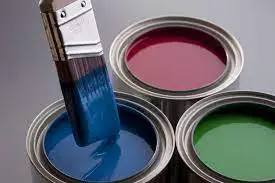
It’s easy to apply too – just rub it onto the surface in a circular motion until desired effect is achieved! With these kinds of sustainable solutions at your fingertips, creating an eco-friendly home decor has never been easier.
By opting for low VOC paints and natural finishing solutions such as beeswax, you can create beautiful spaces without having to worry about harming the planet in the process. Now let’s move on to looking at some great options for natural fabrics and textiles!
Secondhand Treasures
Having already discussed the many benefits of natural fabrics, let’s turn our attention to secondhand treasures. Despite what you may think, upcycling and repurposing secondhand items is not as difficult or time consuming as it seems.
With a little creativity, these pre-owned materials can be transformed into beautiful pieces that will bring your home décor to life.
First, scour thrift stores for furniture and accessories in need of some TLC. A simple coat of paint can go a long way towards sprucing up an outdated piece; try giving a chair or dresser new life with fresh colors and modern hardware.
Don’t forget about smaller household items like lamps, desks, bookshelves—all things that may have been forgotten but still contain plenty of useful potential!
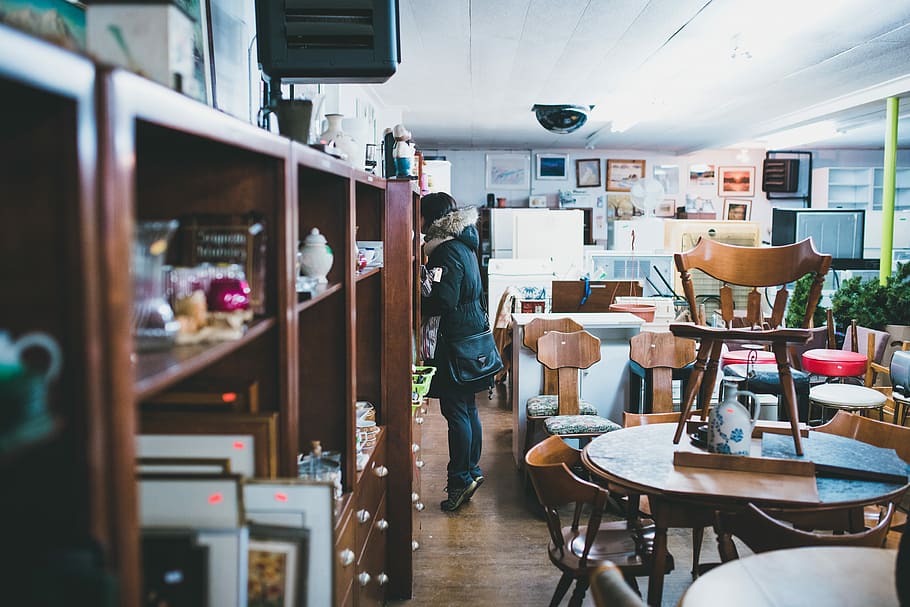
And if you are feeling especially ambitious, consider taking on bigger projects like refinishing an old door into a unique headboard or transforming an armoire into a custom bar cart.
You’d be surprised at how much character even just a few coats of paint can add to any item. These DIY transformations offer stylish solutions while being eco-friendly and budget friendly too!
With so many options available when sourcing secondhand materials, there are endless opportunities for creating one-of-a-kind pieces that showcase your style without breaking the bank. As we move onto discussing DIY projects next, keep this in mind – the possibilities truly are limitless!
DIY Projects
Upcycling and repurposing are great ways to create eco-friendly home decor. DIY projects allow you to get creative with what you have, saving both money and the environment at the same time.
Let’s take a look at some of the most popular upcycling ideas:
Decorative boxes make for great storage solutions or centerpieces in any room. All you need is cardboard and scissors to cut out your desired shape. For an added touch, paint them with colors that match your current décor.
You can also use old books to make book shelves – perfect for a library wall! Stack multiple books together and secure them with wood glue; then add two pieces of wood on either side for stability.
Lastly, fabric samples can be used to design unique lamp shades that will set off any living space. It requires more effort than the other two options but it’s worth it!
These fun projects help bring new life into items that would otherwise end up in landfills – all while creating something beautiful for your home.
Now let’s move onto resourceful shopping tips so we can continue our journey towards savvy eco-consciousness!
Best Practices For Waste Reduction
Reducing waste is an essential part of living a sustainable lifestyle. By following the best practices outlined below, you can help make your eco-friendly home decor journey more successful and enjoyable while also reducing your environmental impact:
- Donate or sell items rather than throwing them away.
- Buy only what is needed and shop secondhand whenever possible.
- Reuse materials when creating DIY projects instead of buying new ones.
- Repair broken items to extend their life cycle.
The benefits of these practices are twofold – not only do they reduce waste, but they save money as well! If you donate or sell items that are no longer in use, you’ll be able to recoup some of the costs from their initial purchase price.
Shopping second hand for furniture and other home goods helps keeps prices low too – plus it adds unique character to your space!
And if you learn how to repair broken items yourself, you won’t have to buy something new just because one thing stopped working correctly.
Being creative about reuse and repurposing will also keep budget costs down by allowing you to get multiple uses out of existing materials without having to spend any extra money on supplies.
By incorporating simple yet effective strategies into our daily lives we can start making changes towards becoming a more sustainable society – with cost savings added in as an extra bonus!
In addition to helping preserve natural resources, these practices will allow us to realize even greater financial gains when it comes time to decorating our homes using eco-friendly methods.
Cost Savings Of Eco-Friendly Home Decor
Upcycling and repurposing old items can be like a game of treasure hunt, with the reward being more than just money saved.
With thoughtful planning and resourcefulness, it’s possible to transform ordinary objects into beautiful pieces of eco-friendly home decor without breaking the bank.
One way to save on furniture is by shopping second-hand stores or online classifieds for preloved finds that have been gently used or are in good condition.
It’s also possible to give new life to thrift store chairs and tables through sanding and refinishing them with paint or stains.
If you’re looking for something with a modern feel, buying upcycled materials such as wooden pallets from factories or reclaimed wood from construction sites can easily create custom shelving or even an outdoor deck.
For those who don’t want to invest in pricey wall art, DIY projects make use of everyday items around the house—from mason jars filled with colorful rocks or buttons to photo frames made out of cardstock paper folded origami style—for interesting displays that cost next to nothing.
And when it comes time to replace textiles such as curtains, blankets, and rugs, opting for organic cotton fabrics or vintage woolen throws will add texture while keeping costs low.
By embracing creative solutions rather than relying solely on costly retail purchases, anyone can find ways to beautify their space with budget-friendly yet stylish touches that are both sustainable and ethical.
From discovering hidden gems at flea markets to giving forgotten objects a fresh look, there are countless possibilities for creating unique eco-friendly home decor affordably — all it takes is some imagination!
Transition sentence: For those seeking further inspiration for eco-friendly home decor ideas, resources abound…
Resources For Inspiration
For eco-friendly home decor, it’s helpful to have inspiration. Luckily, there are plenty of resources out there for finding upcycling and repurposing ideas.
One great place to look is on Pinterest; you’ll find a ton of boards dedicated to DIY projects with instructions, materials needed, and photos of the finished project.
You can also search “upcycle” or “repurpose” in Google Images for pictures that might help spark an idea.
If you’re looking for more comprehensive guides, check out sites like Instructables or Lifehacker – they often feature articles on creative ways to use everyday items around your house in new and interesting ways.
Another great source is online forums such as Reddit’s ‘r/DIY’ community. Here you can read others’ experiences when it comes to creating art from recycled objects, ask questions, and share tips.
Finally, don’t forget about local thrift stores! They carry all kinds of used items that could be perfect for your next upcycling project—you never know what treasures await until you take a peek inside.
With these resources at hand, you can start turning household junk into beautiful pieces of art today.
Frequently Asked Questions
What Is The Best Way To Find Upcycled/Repurposed Materials?
Finding the right materials to upcycle or repurpose can be daunting. But with a little research and creativity, you can find high-quality materials that will last for years to come.
Here are some of the best ways to source upcycled/repurposed materials:
- Shopping at Secondhand Stores: This is one of the easiest and most cost effective methods of finding upcycled/repurposed materials.
You’ll have access to gently used items from furniture stores, clothing boutiques, estate sales, garage sales, flea markets and more. Plus, you may even stumble upon rare finds that could become your new favorite pieces! - Participating in Upcycling Challenges: There are many different competitions out there where participants must create something unique with recycled components.
These contests provide an excellent opportunity to learn how to use scrap material while also having fun! Many communities now offer these events on a regular basis so it’s easy to stay involved and keep looking for great ideas. - Recycling Waste Material: It’s no secret that we generate a lot of waste every day but if this trash is sorted properly then it can easily be reused as raw material for crafting projects.
Some examples include old bottles, cardboard boxes, plastic containers, glass jars, paper rolls etc. By taking the time to sort through our garbage we can turn seemingly useless junk into something functional or beautiful!
By shopping secondhand stores, participating in upcycling challenges and recycling waste material – creative minds are sure to find plenty of interesting pieces for their eco-friendly home decor project.
Whether you’re looking for simple accents or larger statement pieces – there’s ample potential waiting just around the corner!
Are There Any Natural Fabrics Or Textiles That Are More Environmentally Friendly Than Others?
Are there any natural fabrics or textiles that are more environmentally friendly than others? When looking for eco-friendly home decor, understanding the difference in fabrics and textiles is important.
Natural materials, such as cotton, linen, hemp and wool have a much lower environmental impact than synthetic materials like polyester and nylon.
Cotton is one of the most widely produced fibers in the world and may be grown organically without the use of pesticides or herbicides.
It’s also recyclable but can only be downcycled into low quality products. Hemp on the other hand requires no fertilizers to grow and produces four times more fiber per acre compared to cotton.
It’s strong yet lightweight making it an excellent choice for bedding, towels, curtains and clothing items. Besides that, hemp is biodegradable so it can just go back into the environment when it has reached its end of life cycle.
Linen and wool are two additional sustainable options when trying to create an eco-friendly home decor space.
Linen is made from flax plants which require minimal water during production while wool is derived from sheep’s coats which naturally shed each season.
Both these fibers are considered renewable resources since they will continue to regenerate year after year with proper care and management.
Additionally both fibers don’t need harsh chemicals to process them leading to less air pollution in their production processes then some synthetic alternatives do.
In summary if you’re looking for sustainable fabric choices consider using organic cotton, hemp, linen or wool over synthetics like polyesters or nylons whenever possible.
They all offer distinct advantages not only in terms of being kinder on our planet but also provide unique textures and looks within your eco-friendly home decor setup!
What Are The Most Cost-Effective Eco-Friendly Options For Home Decor?
When it comes to decorating your home in an eco-friendly way, cost effectiveness is a major factor. When creating a space that not only looks good but does its part for the environment too, there are several options worth considering.
From upcycling and repurposing existing pieces to opting for natural fabrics, here’s how you can create an eco-conscious living space on a budget:
- Upcycled Pieces: Putting old items to new uses is one of the best ways to get creative with green decor. You can take furniture or other items you already have and give them a fresh look with paint, stain, or fabric.
You could even try making something entirely new out of scraps and castoff materials like pallets and driftwood! - Repurposed Items: If you don’t want to go all in on upcycling, finding unique secondhand pieces at flea markets, thrift stores, estate sales or online consignment shops can be a great way to add personality to your home without breaking the bank.
Look for vintage furniture or art that still has some life left in it – just make sure whatever you buy isn’t made from hazardous materials like lead paints or formaldehyde glues!
There’s also plenty of inexpensive greener alternatives when it comes to textiles and fabrics.
Natural fibers such as organic cotton, hemp, wool, silk and linen are much more sustainable than their synthetic counterparts because they require less energy and resources during production and break down faster if disposed of responsibly.
They’re often softer and longer lasting too – perfect for investing in timeless pieces that will last through years of use while maintaining their environmental integrity.
Creating an eco-friendly home doesn’t have to mean compromising on style; these cost effective solutions allow us to express our personalities while doing our bit for the planet at the same time – what better motivation could we ask for?
Are There Any Alternatives To Plastic And Synthetics For Home Decor?
When it comes to home decor, plastic and synthetics are some of the most widely used materials. But they come with a hefty environmental cost – not only in their production, but also in their disposal. So what are the alternatives?
Are there any eco-friendly options for those looking to spruce up their homes without adding to landfills or contributing to climate change? Here’s a look at four great ideas:
- Upcycling – This is simply about taking something that already exists and turning it into something new, more useful, and beautiful.
Whether you’re repurposing an old piece of furniture or giving an ordinary object like a jar a new lease on life, upcycling has the potential to turn your space from drab to fab! - Natural Materials – If you want your home decor to have a low environmental impact while still making a statement, opt for natural materials like wood or stone instead of plastic or synthetic fabrics.
Not only do these materials last longer than their counterparts; they also tend to be better for our planet because they don’t require energy-intensive manufacturing processes. - Secondhand Items – Shopping secondhand can save money as well as reduce waste by keeping items out of landfills where they would otherwise end up if thrown away after being bought new.
Look for vintage pieces with interesting shapes, patterns, and textures that add character and charm to any room. It’s also worth checking out thrift stores which often offer one-of-a-kind finds at very reasonable prices! - DIY Projects – For creative types who love getting crafty with projects around the house, why not make your own decorations?
From hanging planters made from tin cans and string art crafted with cardboard boxes to wall hangings created using recycled fabric scraps – there are plenty of fun (and free!) ways of expressing yourself through design!
Eco-friendly home decor doesn’t need to mean compromising on style or spending lots of money – just think outside the box when coming up with ideas!
With these simple solutions, you’ll soon have your place looking fabulous without breaking the bank or harming the environment in any way.
What Are The Best Practices For Reducing Waste When Shopping For Home Decor?
Shopping for home decor can easily become overwhelming and wasteful, so it’s important to practice the best practices when shopping.
According to a recent survey, 95% of people believe that reducing waste is an important part of being eco-friendly. Here are some ways to reduce your waste while shopping for home decor:
- Reuse items you already have in different ways – repurpose them or upcycle them into something new!
- Shop secondhand whenever possible. This way, you’re giving furniture and other products another chance at life, rather than buying brand new items.
- Look for sustainable materials like bamboo, cork, linen and hemp instead of plastic or synthetic materials which are not recyclable and often require large amounts of energy to produce.
It’s also helpful to focus on quality over quantity – investing in one well-made item may cost more initially but will last much longer than cheap alternatives.
When looking at furniture pieces, pay attention to how they were made; look out for things like FSC certified wood (Forest Stewardship Council) which ensures that forests are managed responsibly.
You should also make sure any metals used have been recycled or sourced sustainably as this reduces their environmental impact significantly.
When shopping online, be mindful of packaging and shipping materials; many companies use excessive amounts of plastic bubble wrap which cannot be recycled and ends up in landfills where it can take centuries to decompose.
Try opting out of unnecessary packaging by sending emails directly to the company asking if they could minimize the amount used – most companies are happy to accommodate these requests!
Ultimately, the key is being conscious about what we buy and how much material gets wasted along the way. Every little bit helps towards creating a healthier environment for us all!
Conclusion
It’s ironic how difficult it can be to make eco-friendly choices when decorating your home. After all, what better way to show our love for the environment than by furnishing our homes with materials that have been upcycled or repurposed?
Unfortunately, finding these materials isn’t always easy, and cost concerns may lead us to choose less planet-friendly options instead.
However, there are still plenty of ways we can reduce our environmental impact while making sure our homes look great.
By exploring natural fabrics and textiles over plastic or synthetic alternatives, shopping for secondhand items whenever possible, and looking for DIY projects as a fun alternative to store-bought décor, I’m confident we can find sustainable solutions that fit within any budget.
Ultimately, eco-friendly home decor is an achievable goal – but only if you’re willing to put in some extra research and effort!
With a little bit of creativity and commitment to reducing waste wherever possible, you’ll be able to create the beautiful space you want without compromising on sustainability.
For sustainable supplies for home and kitchen go to this page.
